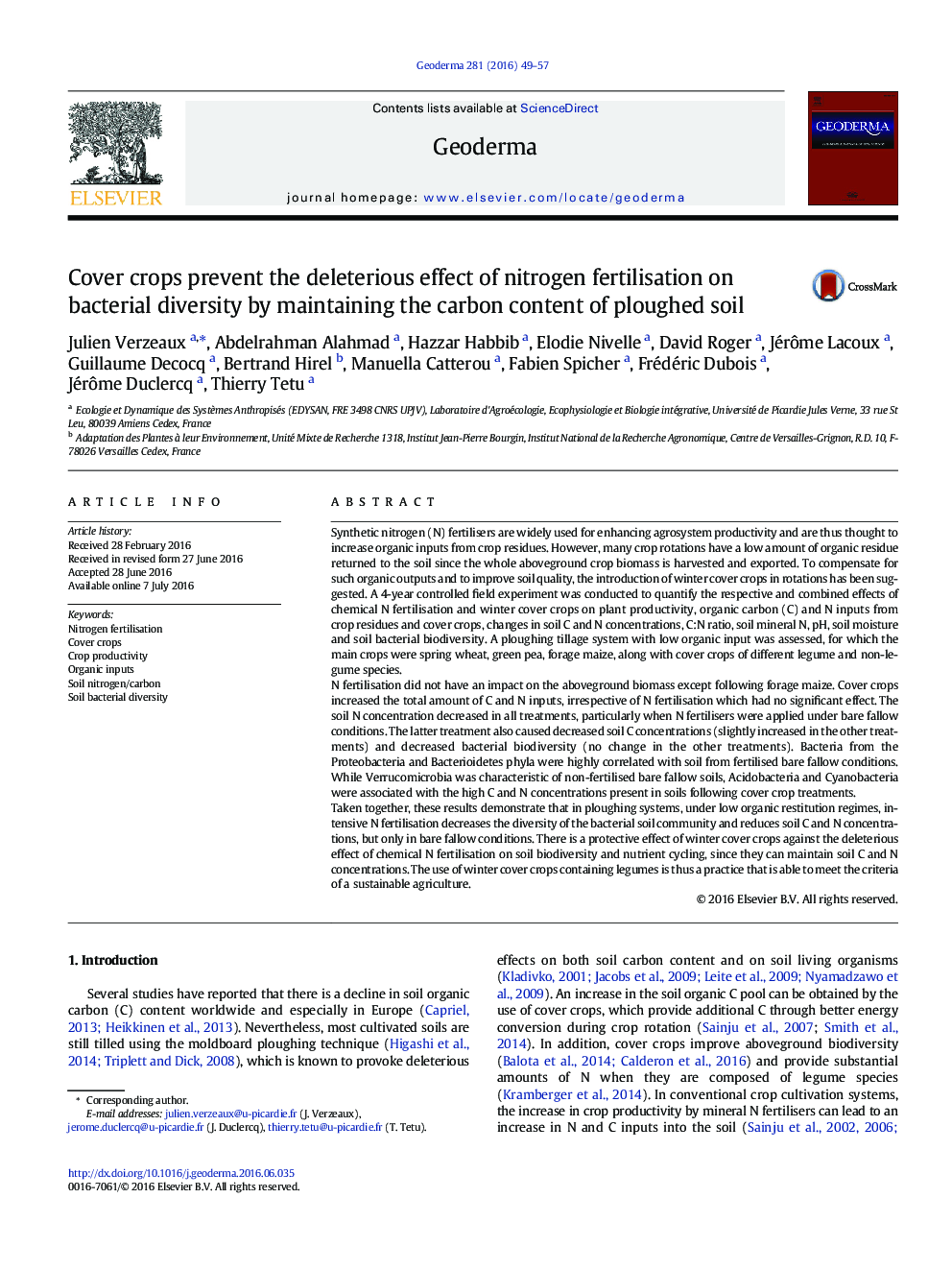| کد مقاله | کد نشریه | سال انتشار | مقاله انگلیسی | نسخه تمام متن |
|---|---|---|---|---|
| 6408249 | 1629436 | 2016 | 9 صفحه PDF | دانلود رایگان |
- Soil nitrogen and carbon as well as bacterial diversity decrease under nitrogen fertilisation without cover crops.
- Bacterial community composition is markedly modified under nitrogen fertilisation without cover crops.
- Cover crops allow maintaining stable soil nitrogen and carbon concentrations, bacterial diversity, and bacterial community composition.
Synthetic nitrogen (N) fertilisers are widely used for enhancing agrosystem productivity and are thus thought to increase organic inputs from crop residues. However, many crop rotations have a low amount of organic residue returned to the soil since the whole aboveground crop biomass is harvested and exported. To compensate for such organic outputs and to improve soil quality, the introduction of winter cover crops in rotations has been suggested. A 4-year controlled field experiment was conducted to quantify the respective and combined effects of chemical N fertilisation and winter cover crops on plant productivity, organic carbon (C) and N inputs from crop residues and cover crops, changes in soil C and N concentrations, C:N ratio, soil mineral N, pH, soil moisture and soil bacterial biodiversity. A ploughing tillage system with low organic input was assessed, for which the main crops were spring wheat, green pea, forage maize, along with cover crops of different legume and non-legume species.N fertilisation did not have an impact on the aboveground biomass except following forage maize. Cover crops increased the total amount of C and N inputs, irrespective of N fertilisation which had no significant effect. The soil N concentration decreased in all treatments, particularly when N fertilisers were applied under bare fallow conditions. The latter treatment also caused decreased soil C concentrations (slightly increased in the other treatments) and decreased bacterial biodiversity (no change in the other treatments). Bacteria from the Proteobacteria and Bacterioidetes phyla were highly correlated with soil from fertilised bare fallow conditions. While Verrucomicrobia was characteristic of non-fertilised bare fallow soils, Acidobacteria and Cyanobacteria were associated with the high C and N concentrations present in soils following cover crop treatments.Taken together, these results demonstrate that in ploughing systems, under low organic restitution regimes, intensive N fertilisation decreases the diversity of the bacterial soil community and reduces soil C and N concentrations, but only in bare fallow conditions. There is a protective effect of winter cover crops against the deleterious effect of chemical N fertilisation on soil biodiversity and nutrient cycling, since they can maintain soil C and N concentrations. The use of winter cover crops containing legumes is thus a practice that is able to meet the criteria of a sustainable agriculture.
Journal: Geoderma - Volume 281, 1 November 2016, Pages 49-57
